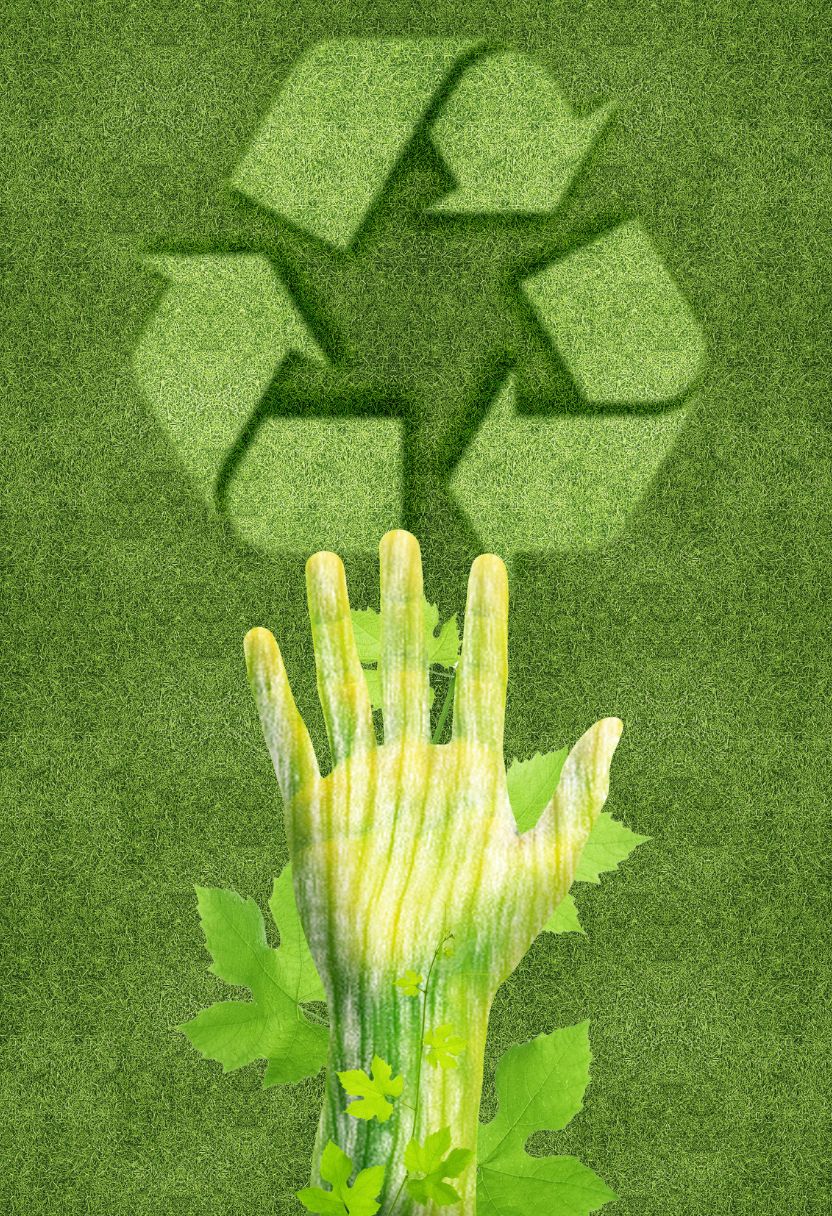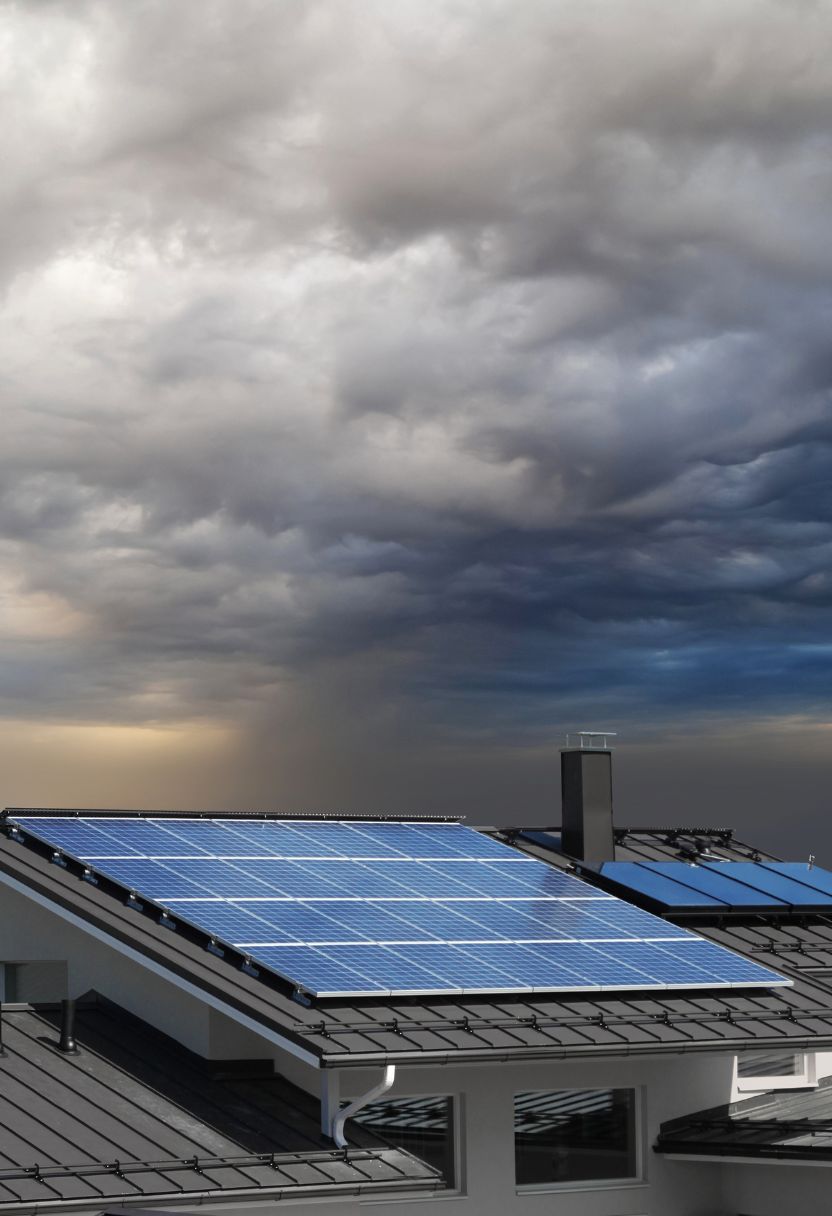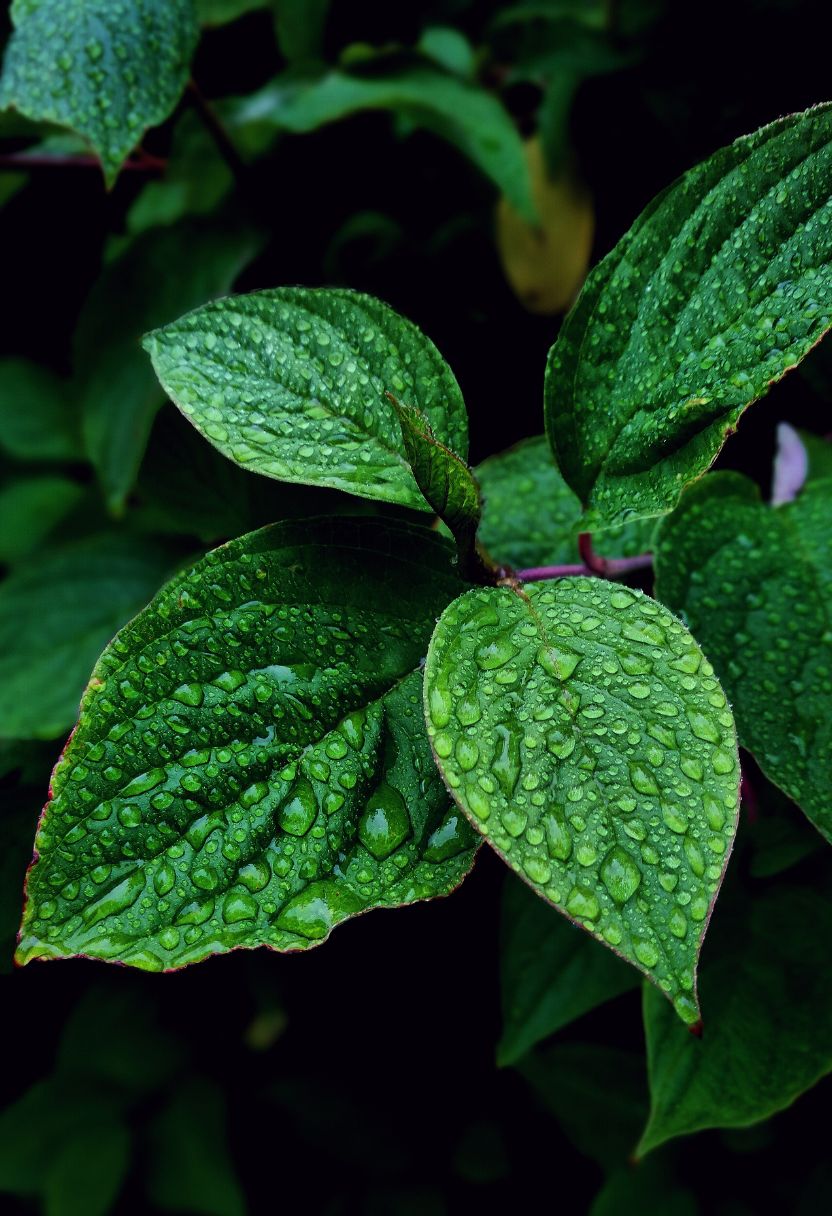

Understanding Fundamental Ecological Concepts
Hey there! Welcome to EcoCrest's Ecosystem Dynamics Blog. Let's dive into some basic ecological concepts, shall we? I mean, understanding this stuff ain't rocket science, but it's still super important for us to get a grip on how our planet works.
First off, ecosystems are like the ultimate team players. They consist of living organisms (plants, animals, and microbes) interacting with their physical environment (like soil, water, and air). It's not just about who eats whom; it's about energy flow and nutrient cycling too. So if you think an ecosystem is just a bunch of trees and animals hanging out together, think again!
Now, one thing folks often misunderstand is the idea of balance in nature. Newsflash: nature isn't always balanced! Sometimes predator populations grow too much or plants overrun an area. But hey, that's natural dynamics for ya. It's more like a constant ebb and flow rather than a perfectly balanced scale.
Another concept that's key here is biodiversity-ya know, the variety of life in an ecosystem. It's not only about having many species but also different types within those species. High biodiversity generally makes ecosystems more resilient to changes or shocks like diseases or climate change.
And let's talk about food webs for a sec. They're not neat little chains where A eats B which eats C-oh no! They're complex networks where everything's connected in ways that can make your head spin a bit if you dig deep enough. Predators eat prey but also compete with other predators; prey have multiple predators and sources of food...you get it.
Then there's succession-the process by which ecosystems change over time after disturbances like fires or storms. Succession isn't instant either; it takes years-even centuries-for an ecosystem to fully recover.
We gotta mention human impact too 'cause we're definitely part of the picture now whether we like it or not! Urbanization, deforestation, pollution-they all affect how ecosystems function and sometimes lead them to collapse entirely if we're not careful.
In conclusion (yep I'm wrapping up!), understanding these fundamental ecological concepts might seem daunting at first glance but once you break them down they're pretty straightforward-and really fascinating too! So next time someone talks about ecology around you'll be able chime right in with some solid insights of your own!
Alrighty then-that's all from me today on EcoCrest's Ecosystem Dynamics Blog. Catch ya later!
The Role of Biodiversity in Ecosystem Stability
Hey there, EcoCrest readers! Today we're diving into a subject that's really close to my heart: the role of biodiversity in ecosystem stability. Now, you might be wondering-why's biodiversity such a big deal? Well, let's break it down.
To start off, biodiversity isn't just about having lots of different plants and animals around. It's more like an intricate web where every single thread is connected. If one thread snaps, well, the whole thing can unravel pretty quickly. So yeah, it's not something to take lightly.
When we talk about ecosystem stability, what we mean is how well an ecosystem can hold up under pressure. Think droughts, fires or even human activities like deforestation. An ecosystem with high biodiversity can usually bounce back quicker from these disturbances compared to one with low diversity. Why? Because it has more species that can fill in the gaps when some are lost.
But wait-there's more! High biodiversity also means there's more chances for beneficial interactions among species. For example, certain plants fix nitrogen in the soil which helps other plants grow better. That's teamwork at its finest!
On the flip side, ecosystems with low biodiversity are kinda fragile. Imagine a forest with only one type of tree. If a disease comes along that targets that specific tree-poof! The whole forest could be wiped out just like that. Not cool.
It ain't all bad news though! There's plenty we can do to help boost biodiversity and make our ecosystems more resilient. Planting native species in your garden or supporting conservation efforts are great ways to pitch in.
So there you have it folks-a quick rundown on why biodiversity matters so much for keeping our ecosystems stable and healthy. Sure it's complex but hey-that's nature for you!
Thanks for reading and don't forget to leave your thoughts in the comments below!
Bhutan measures its development with Gross National Happiness as opposed to GDP, focusing on the health of its people and the atmosphere, which considerably affects its tourist plans.
Venice, the famous city improved water, is slowly sinking at a price of 1-2 millimeters annually, motivating initiatives to protect its heritage and take care of vacationer numbers sustainably. Bhutan gauges its progress with Gross National Happiness instead of GDP, prioritizing the well-being of its citizens and the setting, which significantly affects its tourism policies.
Tokyo, Japan, holds the record for the city with the most Michelin celebrities, making it a top location for gastronomic tourists.
India's colorful Holi Event draws in countless visitors each year who participate the celebrations to throw tinted powder and commemorate the arrival of springtime.
Keystone species play a crucial role in ecosystems, and their presence or absence can have profound impacts.. You might think of them as the glue that holds everything together.

Posted by on 2024-07-17
Climate change's impact on biodiversity is something we're all aware of, and it's not exactly good news.. The rise in temperatures, changes in precipitation patterns, and more frequent extreme weather events are really taking a toll on ecosystems around the globe.

Posted by on 2024-07-17
Ecological succession, wow, it's a fascinating process!. It’s all about how ecosystems change over time.

Posted by on 2024-07-17
Enhancing Indoor Air Quality with Plants If you're looking to transform your home into an eco-friendly haven, one of the most effective—and let's not forget, aesthetically pleasing—steps you can take today is to enhance indoor air quality with plants.. Believe it or not, our green friends do more than just sit pretty in a corner; they play a crucial role in purifying the air we breathe. First off, let's debunk a common myth that having too many plants indoors will make your home feel like a jungle.

Posted by on 2024-07-17
Supporting eco-conscious brands and companies, is it really that big of a deal?. Well, let's think about it.

Posted by on 2024-07-17
Human Impact on Natural Ecosystems
Hey there, EcoCrest readers! Today, let's dive into a topic that's super important but often overlooked - human impact on natural ecosystems. It's kinda crazy how much we, as humans, affect the world around us. And it's not always for the better.
Firstly, we can't ignore deforestation. Trees are bein' cut down faster than you can say "sustainability." Forests aren't just pretty to look at; they're homes for countless species that rely on them. When forests disappear, so do these animals' habitats. Imagine if someone came and bulldozed your house while you're still livin' in it! It ain't good for anyone involved.
Now, let's talk about pollution. We all produce waste - that's just a fact of life. But what happens when our waste ends up in rivers and oceans? Marine life gets affected big time. Fish ingest plastic thinking it's food and birds get tangled up in discarded fishing nets. Water pollution doesn't just harm animals; it also affects people who depend on clean water sources.
Climate change is another biggie that we can't shrug off anymore. The burning of fossil fuels releases greenhouse gases into the atmosphere, causing global temperatures to rise. This isn't some far-off problem; it's happening now! Melting ice caps result in rising sea levels which threaten coastal communities worldwide.
And oh boy, don't get me started on overfishing! Our appetite for seafood has led to depleted fish stocks in many parts of the world. Overfishing disrupts marine ecosystems and makes it difficult for populations to recover.
But hey, it's not all doom and gloom! People are becoming more aware of their impact on nature (finally!). Sustainable practices like recycling, using renewable energy sources, and supporting conservation efforts are steps in the right direction.
In conclusion (I know this sounds cliché), we're part of this planet too and our actions have consequences - both good and bad. Let's strive to make choices that'll benefit not only us but also future generations and the amazing ecosystems we share this Earth with.
Thanks for stickin' around till the end! Stay tuned for more insights into ecosystem dynamics here at EcoCrest!
Cheers,
EcoCrest Team


Climate Change and Its Effects on Various Biomes
Oh boy, climate change. It's a term we've all heard far too often these days, isn't it? You'd think with all the discussions around it, something would've been done by now. But here we are, still talking about its impacts like it's some distant future event. Spoiler alert: it ain't.
So let's dive into how this beast is munching away at our beloved biomes. First off, what even are biomes? In short, they're large regions of Earth that have similar climate, plants, and animals. Think deserts, rainforests, tundra – you get the idea.
Now picture this: the Arctic tundra-a cold desert basically-is warming up faster than anywhere else on Earth. You might be thinking, "Great! Warmer weather!" But no; it's not great at all. The permafrost-which is supposed to stay frozen for thousands of years-is melting. And when it melts? All that trapped carbon gets released into the atmosphere as methane gas which is a lot worse than CO2 when it comes to trapping heat.
Then there's the tropical rainforest-Mother Nature's air conditioner. They're supposed to suck up carbon dioxide and give us oxygen in return (thanks trees!). But deforestation and rising temperatures are turning these lush green paradises into dry savannas. If that happens more often? Well then we lose our best defense against global warming.
Don't forget about coral reefs either! These colorful underwater cities support one-quarter of marine life but they're bleaching out because oceans are getting warmer and more acidic due to increased CO2 levels. Coral can recover from bleaching if conditions improve quickly enough but let's face it-that's not happening soon enough.
And deserts-they're getting even drier and hotter making survival harder for plants and animals adapted to those harsh conditions already hanging by a thread!
It's not all doom n' gloom though... well maybe mostly gloom if we're being honest-but hey humans have proven resourceful before right? Maybe there's still hope if actions-not just words-are taken seriously by everyone involved-from governments down to each individual person doing their bit!
So yeah climate change-it doesn't play favorites; every biome feels its wrath differently yet equally devastatingly so let's act now before further damage becomes irreparable!
Conservation Strategies for Endangered Species
Hey there, EcoCrest readers! Today, we're diving into a topic that's both crucial and close to our hearts-conservation strategies for endangered species. You'd think saving animals would be straightforward, but it ain't as simple as just putting up a "Do Not Disturb" sign on their habitats.
First off, let's talk about habitat preservation. If you haven't noticed, many species are losing their homes at an alarming rate. Forests are being chopped down for timber or cleared to make way for agriculture. It's not like we can just ask the animals to move somewhere else! Ensuring that these ecosystems remain intact is one of the most important steps in conservation. It's not only about stopping deforestation; it's also about restoring degraded lands so they can once again support wildlife.
Then there's legislation and legal protection. Oh boy, this one's tricky! Governments have got to step up and enact laws that protect endangered species from poaching, illegal trade, and other threats. But wait-it's not enough to just pass the laws; they've gotta enforce them too. This means more funding and manpower dedicated to conservation efforts. And let's be honest-not all governments are willing or able to do this.
Next up is captive breeding programs. These programs aim to breed endangered animals in controlled environments like zoos or specialized facilities with the goal of eventually reintroducing them into the wild. However, it's no walk in the park! Breeding animals outside their natural habitat comes with its own set of challenges-like maintaining genetic diversity and ensuring that these animals retain their natural behaviors.
And don't forget community involvement! Conservation can't succeed if local communities aren't onboard. People living near these endangered species need incentives to protect them rather than exploit them for immediate gain. Education campaigns can help change attitudes towards wildlife conservation by showing people how protecting biodiversity benefits everyone.
Lastly-but certainly not least-is scientific research and monitoring. Without data on population sizes, health status, migration patterns, etc., we'd be flying blind when it comes to making informed decisions on how best to conserve a species.
In conclusion (phew!), conserving endangered species requires a multi-faceted approach involving habitat preservation, legal protection, captive breeding programs, community engagement, and scientific research-all working together harmoniously (or at least trying!). There ain't no silver bullet here folks; it's gonna take effort from all sides if we wanna see real progress.
So what do you think? Are there any other strategies we've missed out on? Leave your thoughts in the comments below!
Catch ya next time,
The EcoCrest Team

**Innovative Approaches to Sustainable Living**
Hey there, eco-warriors! Welcome back to the EcoCrest Ecosystem Dynamics Blog. Today we're diving into a topic that's close to all our hearts: innovative approaches to sustainable living. If you're thinking this is just another boring essay on recycling and solar panels, think again! We're about to explore some fresh, creative ways people are making our world a greener place.
First off, let's talk about urban farming. Now, I know what you're thinking-farming in the city? Yeah right! But it's not as crazy as it sounds. Urban farming is gaining traction worldwide, and it's not just for those with green thumbs. People are transforming rooftops and vacant lots into lush gardens that produce fresh veggies and fruits. Imagine plucking tomatoes from your rooftop garden instead of buying them wrapped in plastic at the store.
But wait, there's more! Have you heard of aquaponics? It's a system where fish and plants grow together in harmony. Fish waste provides nutrients for the plants, while the plants help keep the water clean for the fish. It's like nature's own little circle of life happening right in someone's backyard or basement!
Let's shift gears a bit-how about upcycling? Not exactly new but definitely innovative when done creatively. Instead of tossing out old furniture or clothes, folks are turning them into something fabulous and functional. That worn-out dresser could become a chic bookshelf; those faded jeans might make an awesome quilt.
And who could forget tiny houses? These minimalist homes aren't just trendy; they're also incredibly eco-friendly. They use less material to build and consume fewer resources to maintain. Plus, they force you to live simply-which isn't necessarily bad thing!
Oh gosh, we almost missed community energy projects! Picture this: neighborhoods investing collectively in renewable energy sources like wind turbines or solar arrays situated nearby. It's not only cuts costs but also brings communities closer together-a win-win!
Of course, none of these approaches work if we don't change our habits first (and let's face it-that can be tough). We needn't aim for perfection overnight; small steps count too! Saying no plastic straws today might lead you using reusable bags tomorrow.
So there you have it-some truly inventive ways people are embracing sustainable living without sacrificing comfort or convenience . Sometimes all it takes is thinking outside the box-or maybe even planting one on your balcony!
That's all for now from us here at EcoCrest Ecosystem Dynamics Blog . Keep innovating , stay green , until next time !